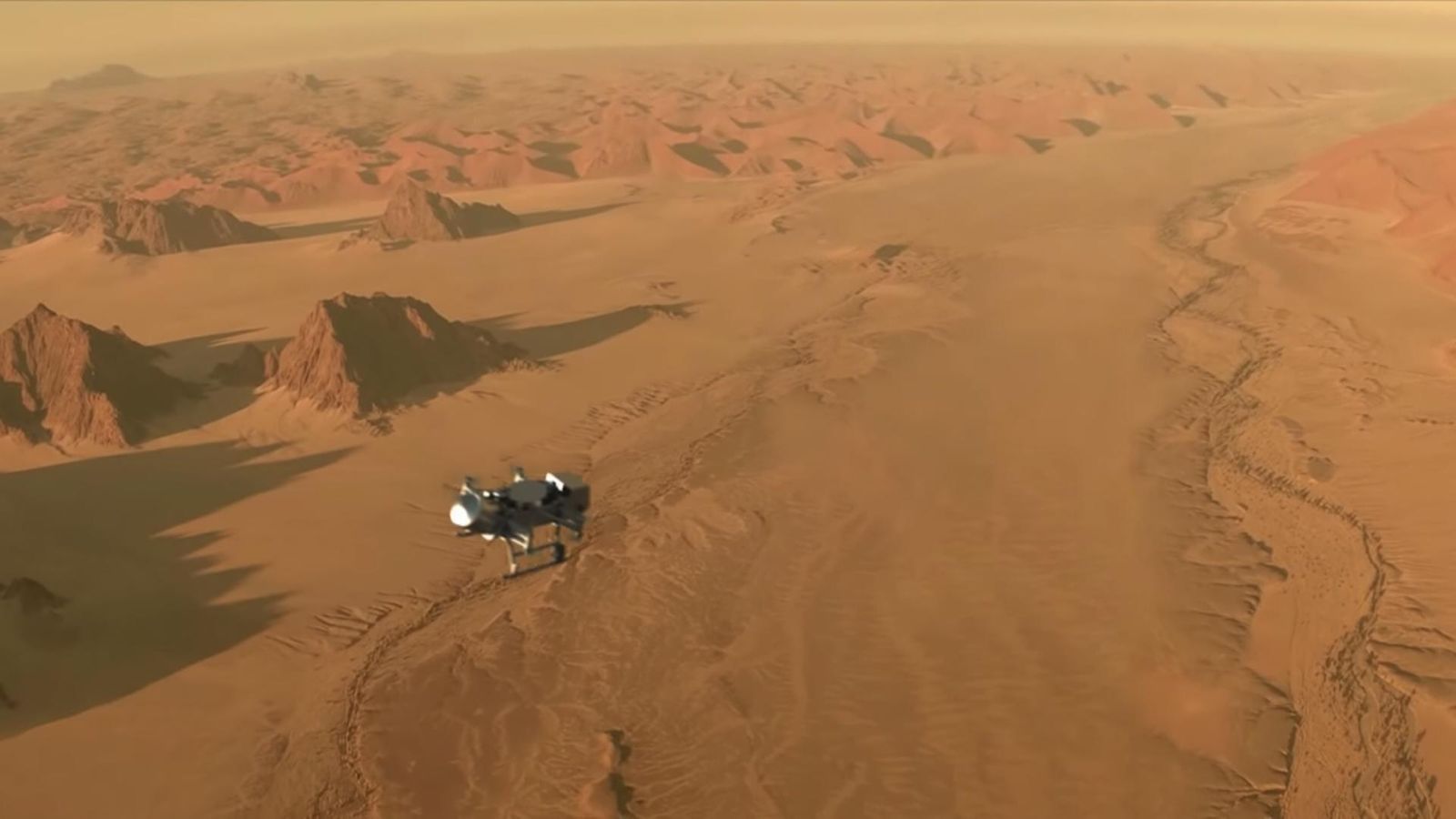Nasa to send 'Dragonfly' drone to Saturn moon 'Titan'
NASA is going to Titan
The space agency announced today (June 27) that the next mission
in its New Frontiers line of medium-cost missions will be Dragonfly, a rotorcraft designed to ply the skies of the huge, hazy and
potentially life-hosting Saturn moon.
If all goes according to plan, Dragonfly will launch in 2026 and
land on Titan eight
years later, NASA officials said. The probe will then spend at least 2.5 years
cruising around the 3,200-mile-wide (5,150 kilometers) moon, making two dozen
flights that cover a total of about 110 miles (180 km).

The 10-foot-long (3 meters) Dragonfly will gather a variety of
data at each of its stops. Such work will help scientists learn more about Titan,
the only solar system body other than Earth known to host stable bodies of liquid on its surface.
Titan's surface lakes, rivers
and seas aren't composed of water, however: The frigid moon's climate system is
based on hydrocarbons, in particular methane and ethane.
The mission is geared toward
characterizing Titan's chemistry in detail. Complex organic molecules are known
to swirl in the moon's thick, nitrogen-dominated atmosphere, and some
scientists think its hydrocarbon seas could host exotic forms of life.
Titan also hosts another potentially habitable environment — a buried ocean of liquid water, which sloshes beneath the
moon's icy crust.
Dragonfly
could conceivably find evidence of Titan life, if the moon is indeed inhabited.
And, because Titan is very similar to the early Earth, the mission's
observations may shed light on the chemical processes that helped life get
going on our planet, NASA officials said.
Check this out a prototype video from NASA
"Titan is unlike any other place in the solar system, and
Dragonfly is like no other mission," Thomas Zurbuchen, NASA's associate
administrator for science at the agency’s headquarters in Washington, D.C., said in a statement.
"It's remarkable to think
of this rotorcraft flying miles and miles across the organic sand dunes of
Saturn's largest moon, exploring the processes that shape this extraordinary
environment," he added. "Dragonfly will visit a world filled with a wide variety of organic compounds, which are the building
blocks of life and could teach us about the origin of life itself."
Dragonfly will land among Titan's dunes, then make its way
toward its final destination, the 50-mile-wide (80 km) Selk Crater. Selk is a
particularly good place to study prebiotic
chemistry and look for signs of life, NASA officials said. That's
because the three ingredients necessary for life as we know it — liquid
water, organic molecules and energy — mixed during the impact that created
the crater. (Titan's bedrock is water ice.)
Dragonfly will be nuclear
powered, like NASA's Mars rover Curiosity, the New Horizons Pluto probe and many other deep-space
explorers.

Dragonfly will be the fourth
mission in the New Frontiers program, following New Horizons, the Juno probe to
Jupiter and the OSIRIS-REx asteroid-sampling mission. Dragonfly's development
costs are capped at $850 million, though the mission's total price tag,
including launch, will probably top $1 billion.
The
other finalist for the mid-2020s New Frontiers launch slot was the Comet
Astrobiology Exploration Sample Return (CAESAR) mission, which proposed
snagging bits of Comet 67P/Churyumov-Gerasimenko — the same icy wanderer
studied up close by Europe's Rosetta mission.
Dragonfly won't be the first
craft to land on Titan. That honor belongs to Europe's Huygens probe, which touched down on the moon in January 2005. Huygens
traveled to the Saturn system with NASA's Cassini spacecraft, which orbited the
ringed planet from mid-2004 through September 2017.
To Stay Updated With Such Type Of Stuff and Many More Subscribe To Our Blog so You Never miss any Update.
 |
| Xiaomi Mi Beard Trimmer at Rs. 1,199 |
 |
| LG debuts W series in India starting at Rs 8,999 |

Comments
Post a Comment